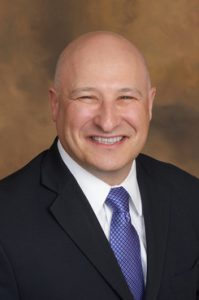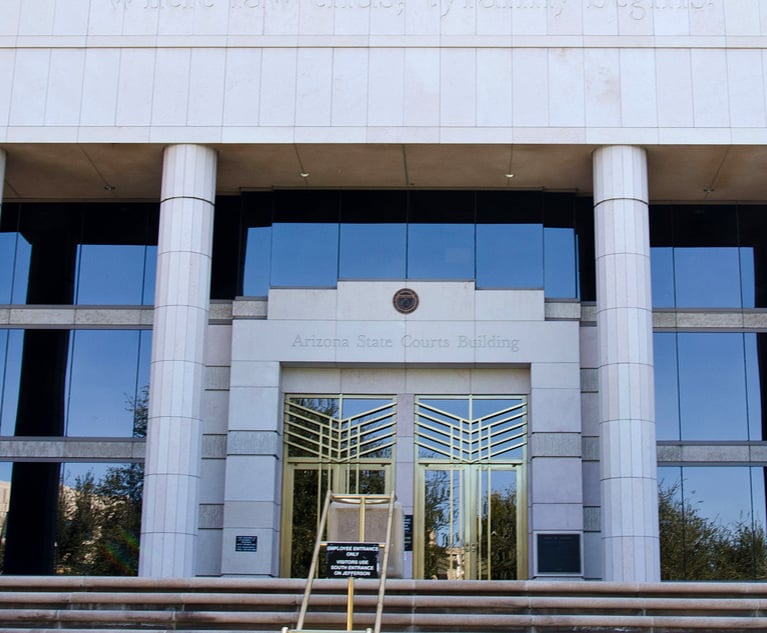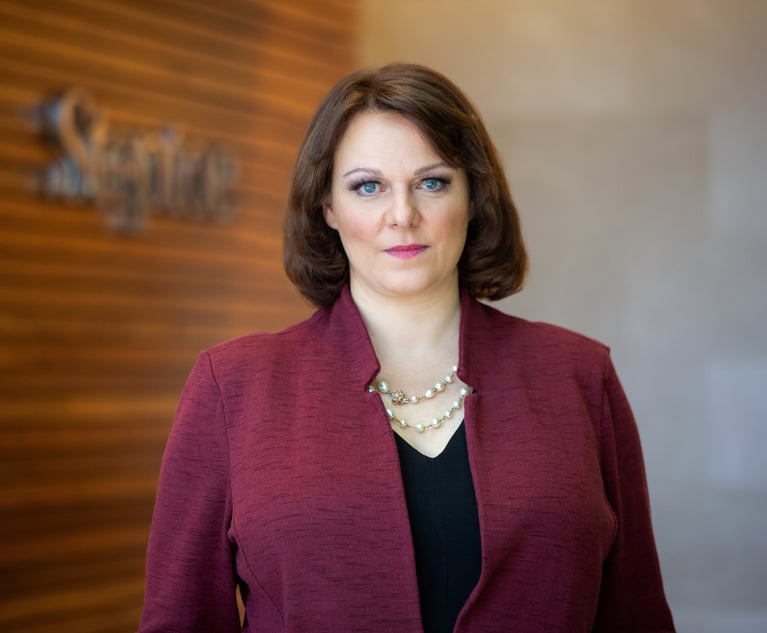In the MeToo Era, Lateral Candidates Are Going Under the Microscope
The hiring process now involves an extra layer of risk—and requires an extra layer of scrutiny.
February 01, 2019 at 05:30 AM
10 minute read
 Credit: Val Bochkov
Credit: Val Bochkov
When assessing a prospective lateral partner candidate, those in charge of hiring at a law firm tend to consider a few common factors—ongoing work and client relationships and whether the candidate's personality and approach will fit within the firm's culture. But these days, in light of the MeToo movement that has called attention to workplace sexual harassment and misconduct, there are a few more questions that hiring partners might want answered before inviting a lateral on board, according to industry experts.
The lateral hiring landscape, as it traditionally operates, doesn't always allow for the kind of vetting that might uncover a potential problem.
“Law firms are beginning to take MeToo seriously. And they are very cognizant of the fact that they have both internal and external stakeholders that are very concerned about the issues that exist inside law firms and professional services firms,” says Michael Ellenhorn, co-founder and general counsel of Decipher, a human resources and market intelligence business focused on the legal industry.
The issues facing law firms in the MeToo era are not just academic. In the recent past, several reports have emerged about lawyers who switched firms, only to be dogged by sexual misconduct allegations soon after.
 James Tanenbaum, a capital markets lawyer, resigned from Mayer Brown last year, about a week after he joined the firm from Morrison & Foerster. His resignation came amid reports that Morrison & Foerster had investigated allegations of sexual misconduct made against him. Tanenbaum has forcefully denied accusations that he acted inappropriately toward female colleagues.
James Tanenbaum, a capital markets lawyer, resigned from Mayer Brown last year, about a week after he joined the firm from Morrison & Foerster. His resignation came amid reports that Morrison & Foerster had investigated allegations of sexual misconduct made against him. Tanenbaum has forcefully denied accusations that he acted inappropriately toward female colleagues.
While Tanenbaum and others like him might make headlines, it's unclear how common it is for a lateral hire to leave a new firm in the wake of a harassment or misconduct allegation. According to a recent survey of 50 firms by ALM Intelligence, 8 percent of respondents said that within the past five years they have had a lateral hire leave the firm because of actions the firm thought were unethical. A larger number, 40 percent, said they had lateral hires leave because of “behavioral issues” involving staff or junior lawyers at the firm.
Industry observers say even a single instance of mishandled misconduct could damage a firm, specifically when it comes to its reputation among prospective partner hires and others in the market. But even as firms have quickly recognized the risk of bringing on a lateral hire with a history of inappropriate behavior, they haven't yet learned how to root out those issues in the hiring process.
“This is hitting them so fast,” Ellenhorn says. “They're trying to navigate this in the best way they can.”
Hiring lateral partners is a critical way for firms to grow practice areas or expand geographically, and a new hire can bring business in the form of client relationships that open up work opportunities for lawyers throughout the firm. But adding a lateral partner is a risky endeavor, with so much that can go wrong, according to industry experts.
“In the professional liability space there has been, for a long time, a conventional wisdom that laterals present significant risk,” says Dan Donnelly, head of claims at ALAS, a malpractice insurer to large law firms. He cautions, however, against making too sweeping a conclusion—at least in the context of professional liability insurance costs—from that conventional wisdom. “It's one of those things that is on the radar as a problem, but I would say statistically it hasn't borne out to be any kind of crazy problem.”
In one common failed lateral scenario, either a partner or a legal recruiter might inflate the size of the business the lawyer can realistically bring to a new firm. Or perhaps the lawyer has a pending malpractice claim related to previous work, or maybe they're just a chore to work alongside, with a tendency to put off fellow employees. In the ALM Intelligence survey, those types of issues stand out as key reasons for a lateral partner to leave. Ninety-two percent of firms said they have had a lateral leave within the past five years because he or she failed to bring the expected book of business, while 80 percent of firms pointed to an inability to form new client relationships as an issue that drove away laterals. Seventy-four percent of surveyed firms said they have had laterals leave because of issues fitting in with other partners.
 Howard Rosenberg, co-founder & CEO of Decipher.
Howard Rosenberg, co-founder & CEO of Decipher.Ellenhorn and Decipher co-founder Howard Rosenberg break lateral hiring risk into four categories that tend to overlap: legal risks, such as conflicts or malpractice claims; business risks, such as an anemic book of business; cultural risk, in which a lateral doesn't fit within the new firm's work culture; and reputational risks, in which issues with a lateral hire are effectively imputed onto the firm where he or she has landed. A potential MeToo scandal implicates all four types of risk.
In light of those risks, law firms are thinking about how they might vet potential hires. Asked by ALM Intelligence about their efforts to complete due diligence on potential hires, 86 percent of the survey respondents said they'd like more information related to candidates' relationships with co-workers.
Despite firms' desire for greater clarity and transparency on a lateral partner's track record at a prior firm, the issues that derail lateral hires are often difficult to discover in due diligence. In part, vetting laterals is a challenge because of the same competitive forces that drive firms into the market in the first place.
Natasha Innocenti, a longtime Bay Area recruiter and partner at Mlegal Group Inc., explains that while hiring law firms can ask potential laterals a wide range of questions, there's a limit to the information they can realistically obtain before offering someone a position. Asking past colleagues or clients for insight on a candidate, for instance, might end up tipping off a rival that the firm is looking to bulk up in a given area.
Raising questions about past conduct directly with a candidate, through a lateral partner questionnaire or some other process, isn't a perfect solution, either.
“The only way you can diligence this in a lateral context is asking the person if they've ever been accused of harassment,” Innocenti says.
 Natasha Innocenti, partner with Mlegal Group.
Natasha Innocenti, partner with Mlegal Group.But as she and other industry players point out, that kind of question doesn't accomplish much in the way of outside, independent vetting, because the firm is relying on a lateral candidate to come clean about a topic that may seriously impact their job prospects. A similar problem arises with respect to reference checks—typically, candidates list professional references who would give a prospective law firm a positive impression.
“It's a tricky thing,” Innocenti says. “It's something you want to contain and deal with in a private way. It's really difficult to use referencing to diligence this.”
The ALM Intelligence survey illustrates how these complications have played out at firms. While an overwhelming majority (90 percent) of the survey respondents said they always perform client conflict checks and look up a candidate's bar disciplinary record, the response was less robust when it came to discussing the candidate with clients, former colleagues or even the person's professional references. Only about a quarter of firms said they always check a candidate's professional references, and 62 percent said they sometimes do.
Even in the face of vetting obstacles, those knowledgeable about the legal hiring landscape say firms are not simply ignoring the MeToo movement. More than that, they can't afford to.
As Decipher's Rosenberg explains, questions about a firm's handling of sexual harassment and misconduct, and broader concerns about gender equity, are growing more common as lateral partners consider new homes for their practices. “The stakes are just getting higher and higher, because it's affecting recruitment, full stop,” he says.
Innocenti has a similar take on the movement's effect on lateral hiring. More and more lawyers with whom she works want detailed information on a potential firm's treatment of women, both in terms of addressing harassment and misconduct issues and in terms of paying women equally and committing to gender diversity among the firm's leadership, she says.
“I do have candidates ask me all the time—men and women—is this firm good for women?” Innocenti says. “That is a difference maker.”
With MeToo calling attention to bad actors and affecting the reputations of their employers, firms face a greater pressure now to demonstrate they are attuned to gender inequality and harassment issues and that they're taking real action to address any problems. Still, as Innocenti and others note, firms face a quandary: It's difficult to vet lateral candidates in a way that would sniff out a potential harassment or misconduct claim while keeping the inquiry discreet so rival firms don't learn that a partner is shopping around for a new home.
In her view, then, the solutions to gender inequity and sexual misconduct in the workplace likely won't be found through the lateral hiring process. Instead, those firms that do more to promote women into leadership and put into place meaningful policies for reporting and dealing with harassment will find themselves ahead of their peers.
“The longer-term route of dealing with this is the better one—that firms are putting in place real policies that enable victims or accusers to know where to go to get assurances that they won't get retaliated against, they won't face punishment,” Innocenti says. “Firms that have a lot of women in management are less likely to have an endemic MeToo problem. The culture will be impacted by that, as well, because it's not going to be tolerated.”
But Innocenti also notes that when it comes to lateral hiring, virtually all of the risk—whether that's the risk of a MeToo issue or a more standard risk, such as a smaller-than-promised book of business—stems from whether and to what extent the firm can perform due diligence. So, she says, even with all the vetting difficulties firms might face, it's a safe to bet that they will do what they can to stop a harassment claim from walking in the door in the form of a lateral hire.
“Firms will increasingly be asking about harassment claims in their lateral partner forms,” she says. “It's a tricky thing, but it's something you want to contain and deal with in a private way.”
Email: [email protected]
This content has been archived. It is available through our partners, LexisNexis® and Bloomberg Law.
To view this content, please continue to their sites.
Not a Lexis Subscriber?
Subscribe Now
Not a Bloomberg Law Subscriber?
Subscribe Now
NOT FOR REPRINT
© 2025 ALM Global, LLC, All Rights Reserved. Request academic re-use from www.copyright.com. All other uses, submit a request to [email protected]. For more information visit Asset & Logo Licensing.
You Might Like
View All
KPMG's Bid to Practice Law in U.S. on Indefinite Hold, as Arizona Justices Exercise Caution

Orrick Hires Longtime Weil Partner as New Head of Antitrust Litigation


Sidley Adds Ex-DOJ Criminal Division Deputy Leader, Paul Hastings Adds REIT Partner, in Latest DC Hiring
3 minute readTrending Stories
- 1Gunderson Dettmer Opens Atlanta Office With 3 Partners From Morris Manning
- 2Decision of the Day: Court Holds Accident with Post Driver Was 'Bizarre Occurrence,' Dismisses Action Brought Under Labor Law §240
- 3Judge Recommends Disbarment for Attorney Who Plotted to Hack Judge's Email, Phone
- 4Two Wilkinson Stekloff Associates Among Victims of DC Plane Crash
- 5Two More Victims Alleged in New Sean Combs Sex Trafficking Indictment
Who Got The Work
J. Brugh Lower of Gibbons has entered an appearance for industrial equipment supplier Devco Corporation in a pending trademark infringement lawsuit. The suit, accusing the defendant of selling knock-off Graco products, was filed Dec. 18 in New Jersey District Court by Rivkin Radler on behalf of Graco Inc. and Graco Minnesota. The case, assigned to U.S. District Judge Zahid N. Quraishi, is 3:24-cv-11294, Graco Inc. et al v. Devco Corporation.
Who Got The Work
Rebecca Maller-Stein and Kent A. Yalowitz of Arnold & Porter Kaye Scholer have entered their appearances for Hanaco Venture Capital and its executives, Lior Prosor and David Frankel, in a pending securities lawsuit. The action, filed on Dec. 24 in New York Southern District Court by Zell, Aron & Co. on behalf of Goldeneye Advisors, accuses the defendants of negligently and fraudulently managing the plaintiff's $1 million investment. The case, assigned to U.S. District Judge Vernon S. Broderick, is 1:24-cv-09918, Goldeneye Advisors, LLC v. Hanaco Venture Capital, Ltd. et al.
Who Got The Work
Attorneys from A&O Shearman has stepped in as defense counsel for Toronto-Dominion Bank and other defendants in a pending securities class action. The suit, filed Dec. 11 in New York Southern District Court by Bleichmar Fonti & Auld, accuses the defendants of concealing the bank's 'pervasive' deficiencies in regards to its compliance with the Bank Secrecy Act and the quality of its anti-money laundering controls. The case, assigned to U.S. District Judge Arun Subramanian, is 1:24-cv-09445, Gonzalez v. The Toronto-Dominion Bank et al.
Who Got The Work
Crown Castle International, a Pennsylvania company providing shared communications infrastructure, has turned to Luke D. Wolf of Gordon Rees Scully Mansukhani to fend off a pending breach-of-contract lawsuit. The court action, filed Nov. 25 in Michigan Eastern District Court by Hooper Hathaway PC on behalf of The Town Residences LLC, accuses Crown Castle of failing to transfer approximately $30,000 in utility payments from T-Mobile in breach of a roof-top lease and assignment agreement. The case, assigned to U.S. District Judge Susan K. Declercq, is 2:24-cv-13131, The Town Residences LLC v. T-Mobile US, Inc. et al.
Who Got The Work
Wilfred P. Coronato and Daniel M. Schwartz of McCarter & English have stepped in as defense counsel to Electrolux Home Products Inc. in a pending product liability lawsuit. The court action, filed Nov. 26 in New York Eastern District Court by Poulos Lopiccolo PC and Nagel Rice LLP on behalf of David Stern, alleges that the defendant's refrigerators’ drawers and shelving repeatedly break and fall apart within months after purchase. The case, assigned to U.S. District Judge Joan M. Azrack, is 2:24-cv-08204, Stern v. Electrolux Home Products, Inc.
Featured Firms
Law Offices of Gary Martin Hays & Associates, P.C.
(470) 294-1674
Law Offices of Mark E. Salomone
(857) 444-6468
Smith & Hassler
(713) 739-1250










